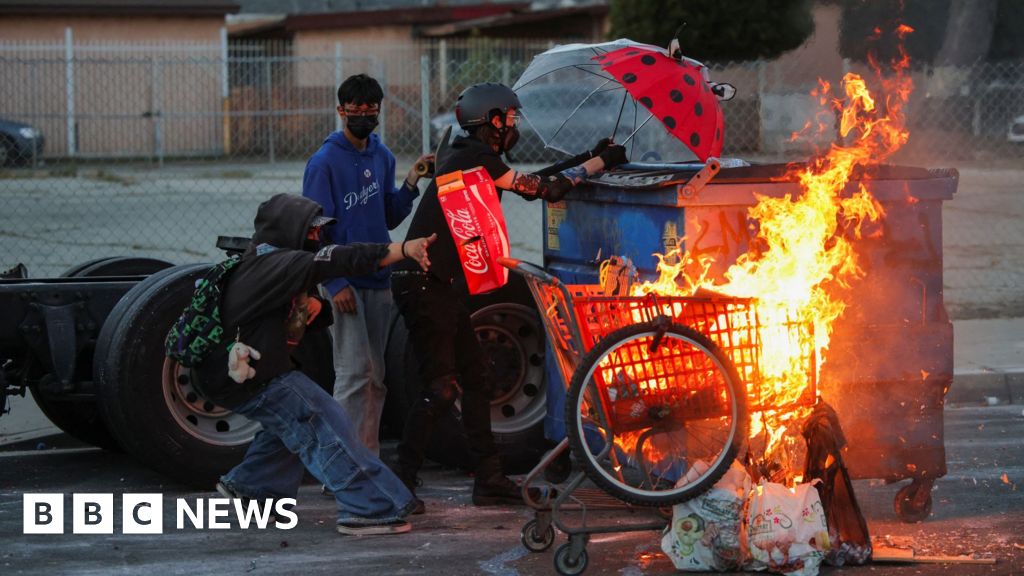ARTICLE AD BOX
By Reality Check team
BBC News
Image source, Getty Images
World leaders at the COP26 climate summit in Glasgow have pledged to end and reverse deforestation by 2030.
There have been other attempts to protect forests, but has any progress been made?
How bad is deforestation now?
Forests absorb vast amounts of carbon dioxide (CO2) - a major contributor to global warming - so cutting down trees can have a big impact on climate change.
The UN says 420 million hectares (one billion acres) of forest have been lost since 1990. Agriculture is the main reason for this.
There have been efforts to protect forests before.
Then, in 2017, it set another target to increase forested land by 3% worldwide by 2030.
But deforestation continued at "an alarming rate", according to a 2019 report, with serious consequences for the fight against climate change.
There has been some reforestation, through natural growth or planting, but trees need years to mature before they can fully absorb CO2.
Over the past decade 4.7 million hectares of forest were still lost annually - with Brazil, the Democratic Republic of Congo and Indonesia among the countries worst affected.
Brazil: Illegal logging continues
Some 60% of the Amazon rainforest is in Brazil, and it plays a vital role in absorbing harmful CO2 that would otherwise escape into the atmosphere.
Brazil's president, Jair Bolsonaro, told the UN that, as of August this year, deforestation in Brazil was down compared with 2020. However, the rate of deforestation is still higher than before he came to office in 2019.
Image source, Getty Images
President Bolsonaro has been criticised for "anti-environment" policies, such as encouraging agriculture and mining in the Amazon.
He has cut the funding for the government agencies that are responsible for prosecuting farmers and loggers who break environmental law. Fines for illegal logging fell by 20% in 2020.
Brazil is not the only country responsible for the deforestation of the Amazon - neighbouring countries, including Bolivia, also contribute.
Congo basin: Agriculture and mining
The Congo forest basin is the second-largest rainforest in the world. More than half of it lies within the Democratic Republic of Congo.
Environmental campaign group Greenpeace says illegal logging - by both large and small companies - is leading to deforestation. Although the US and EU have banned importing illegal timber, it still gets smuggled outside the country.
Other threats include small-scale subsistence agriculture, clearing for charcoal and fuel, urban expansion and mining.
In the past five years, the annual loss of primary forest has been nearly half a million hectares, according to Global Forest Watch.
President Felix Tshisekedi last month ordered an audit of some of the leases allocated to harvest public forests - including one for more than 1.4 million hectares - amid allegations of corruption. The move was welcomed by campaigners.
But earlier this year, the government also announced a plan to lift a ban dating back to 2002 on new logging operations - although it has not yet been implemented.
Greenpeace says that would contradict commitments made earlier this year to protect the forest and increase forest cover by 8%.
Indonesia: Palm oil plantations
Indonesia has been among the world's top five countries for tree-cover loss for the past two decades.
According to data from Global Forest Watch and Nasa, the country has lost 27.7 million hectares of forest in that time.
President Joko Widodo pledged to crack down on deforestation in 2014 by tackling the main contributor - clearing land for oil palm plantations.
Image source, Getty Images
Indonesian government figures say the deforestation rate hit a record low in 2020.
In 2019, President Widodo issued a three-year moratorium on new forest clearance, covering about 66 million hectares of primary forest and peatland. The ban was extended indefinitely this year.

 3 years ago
142
3 years ago
142








 English (US) ·
English (US) ·